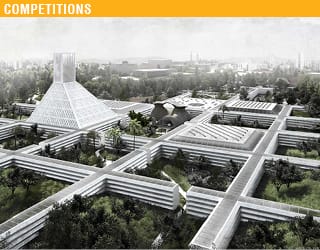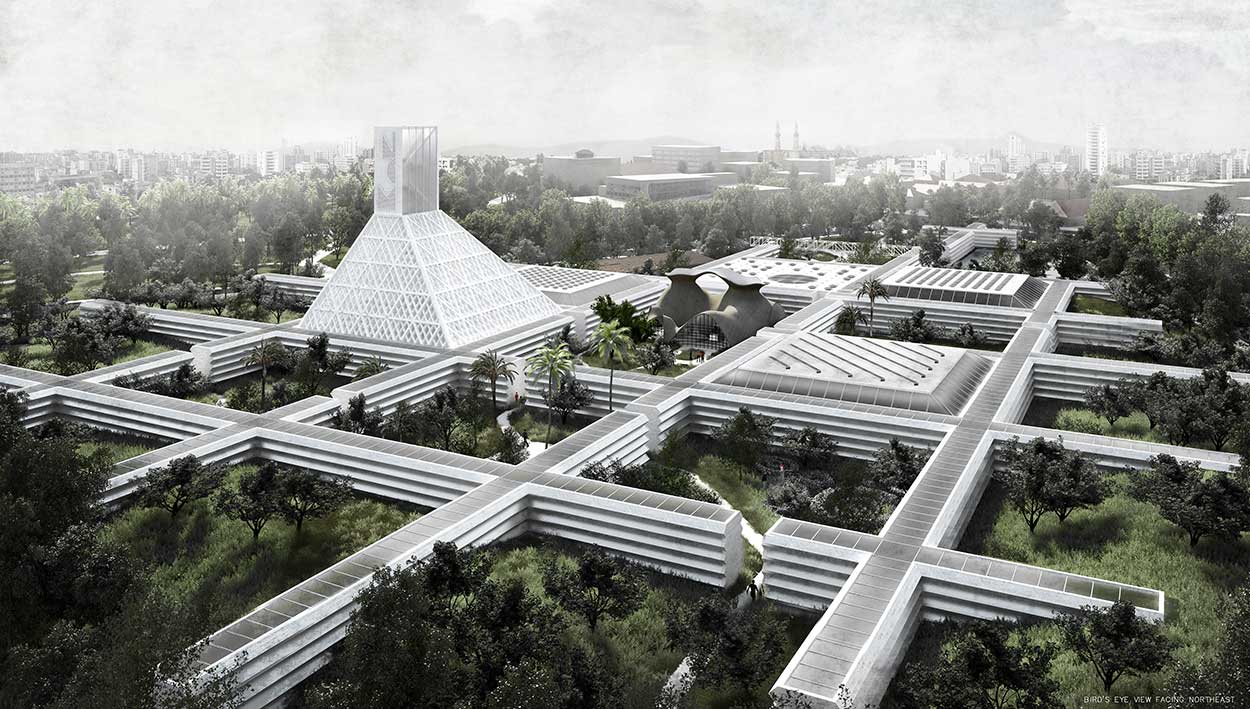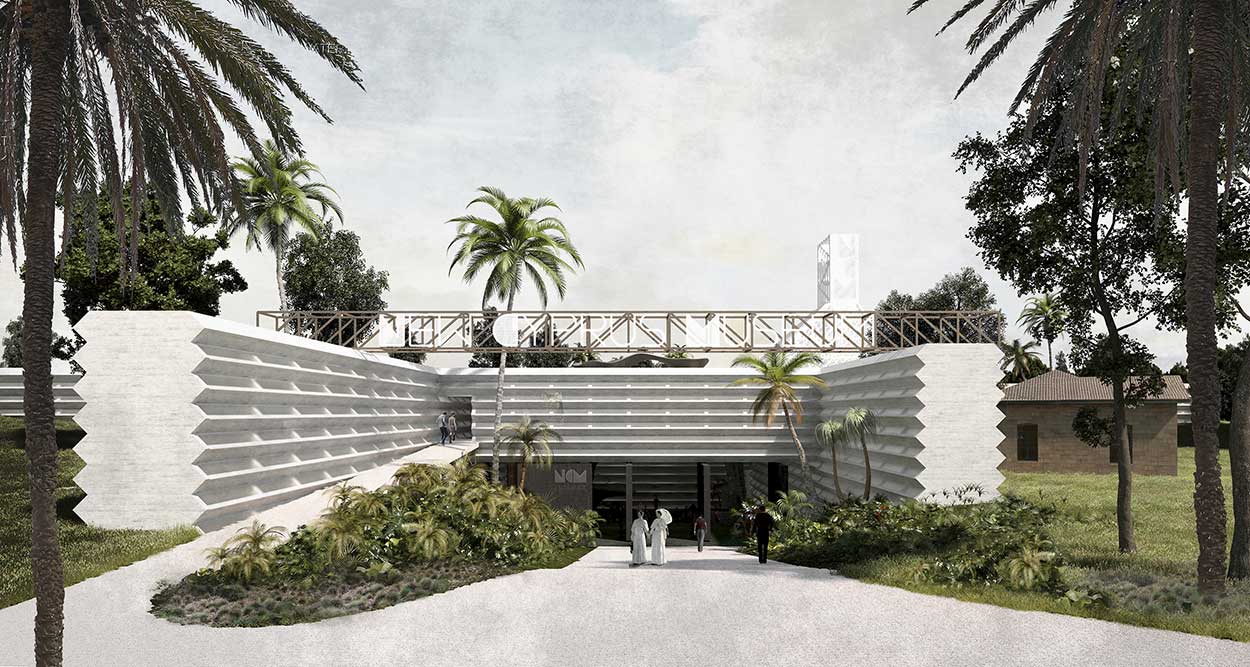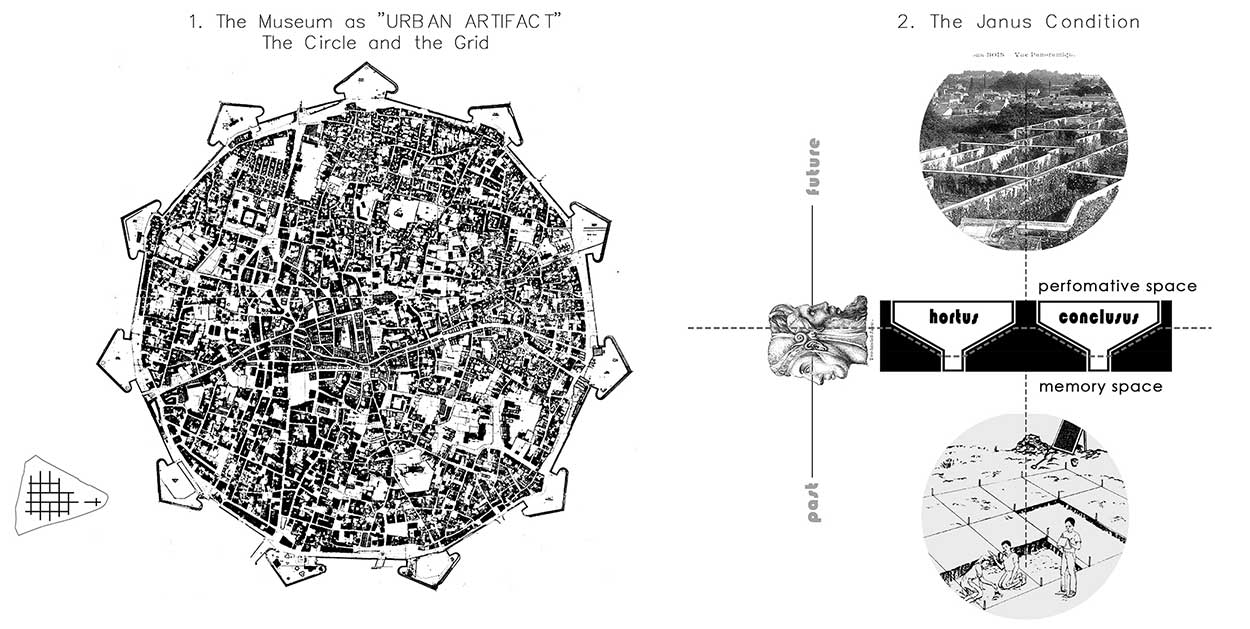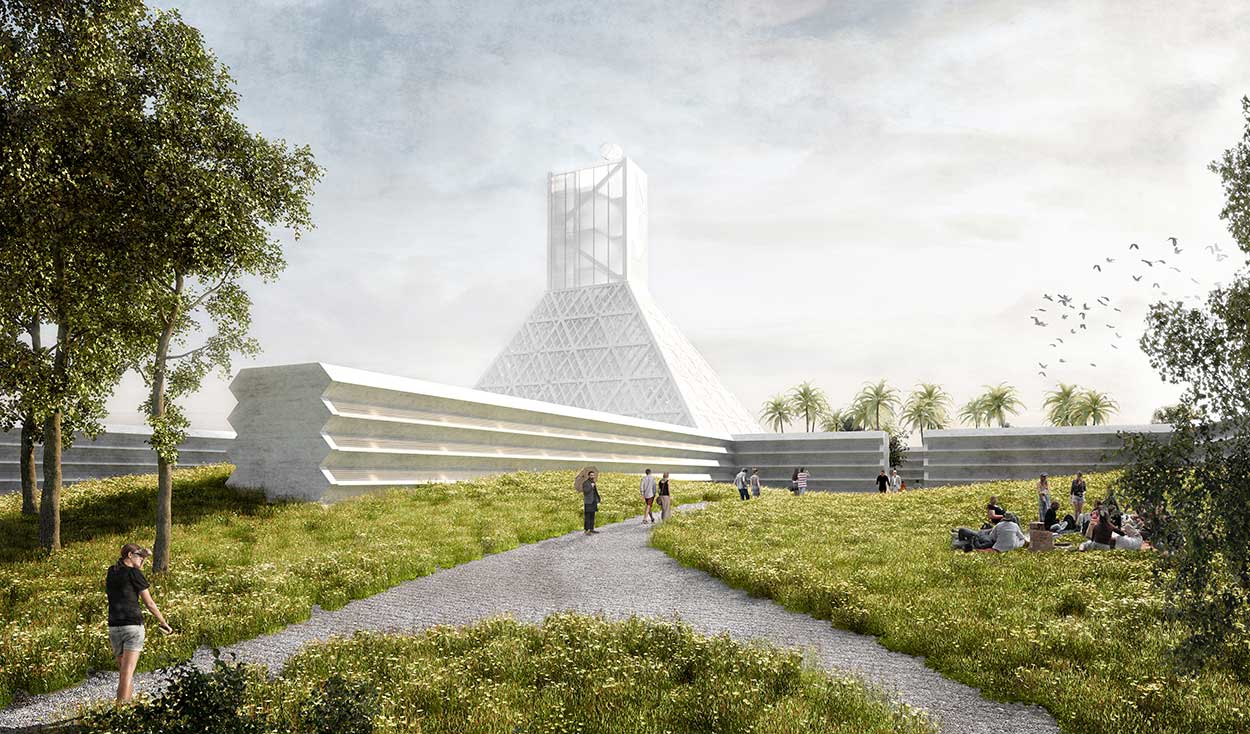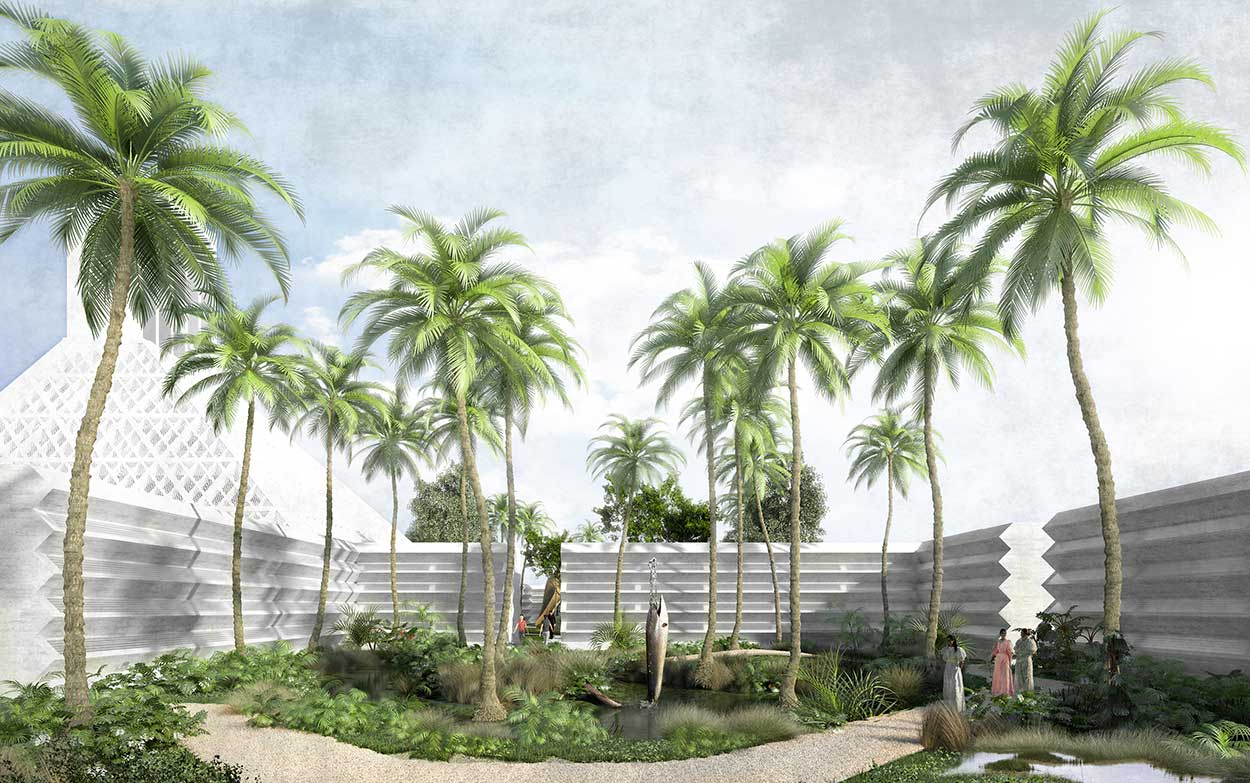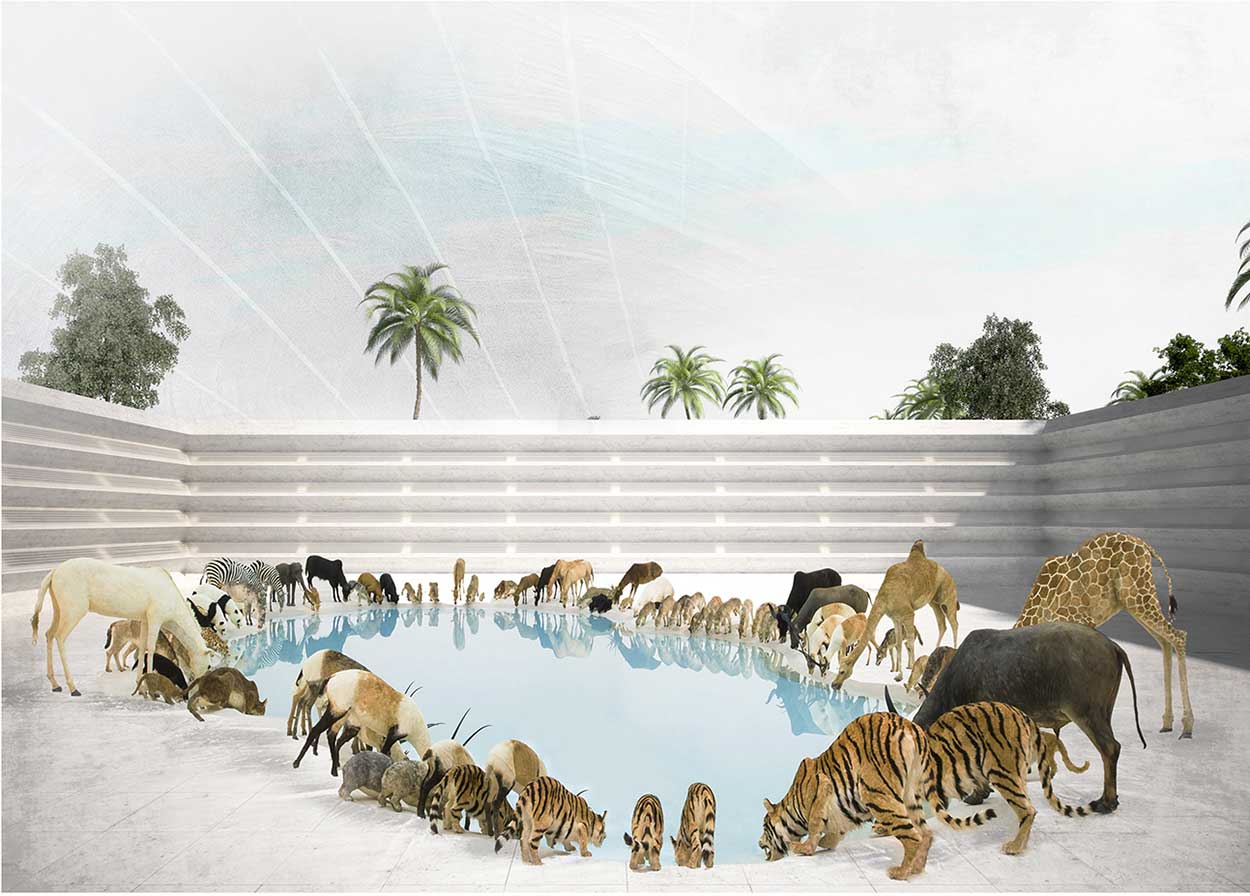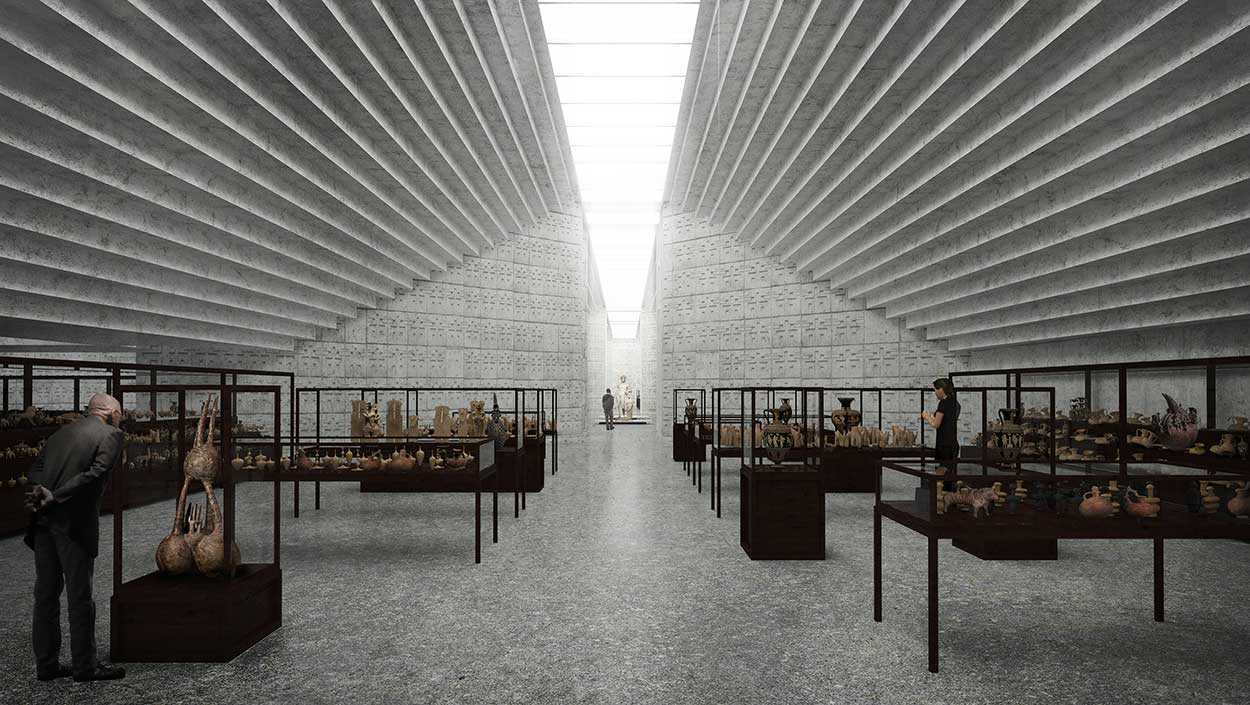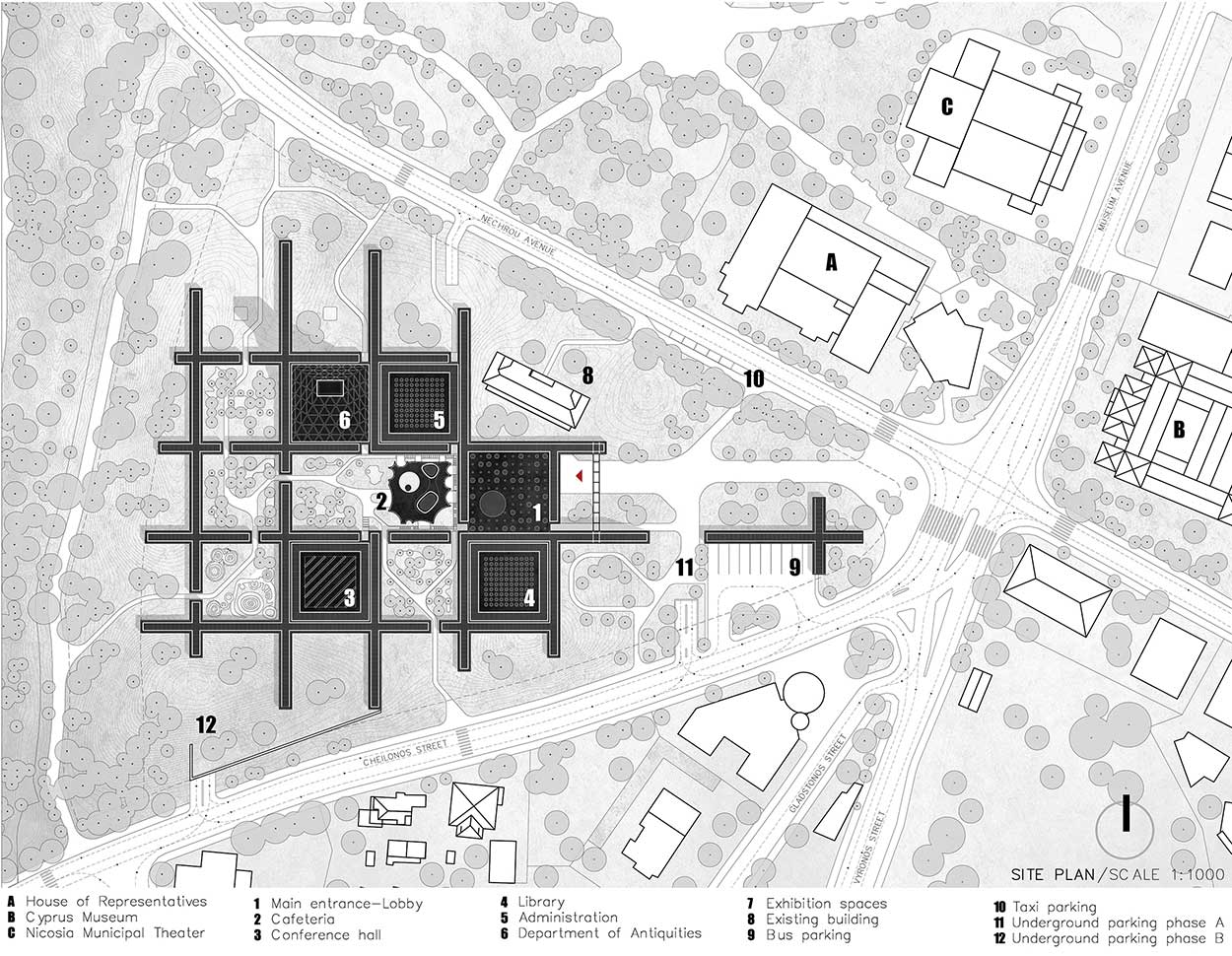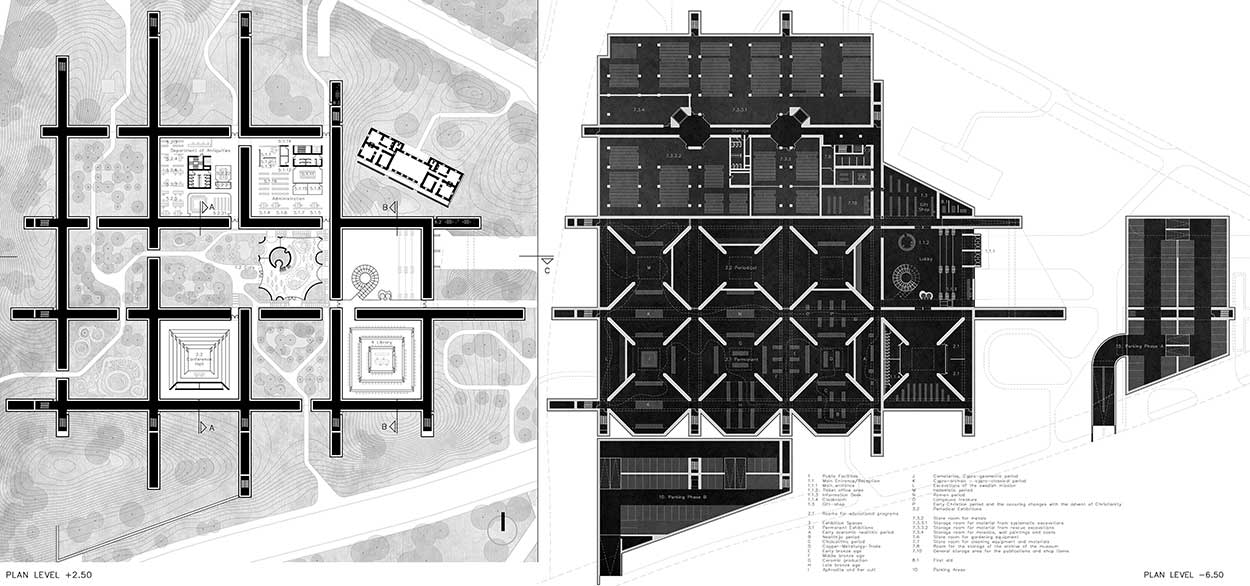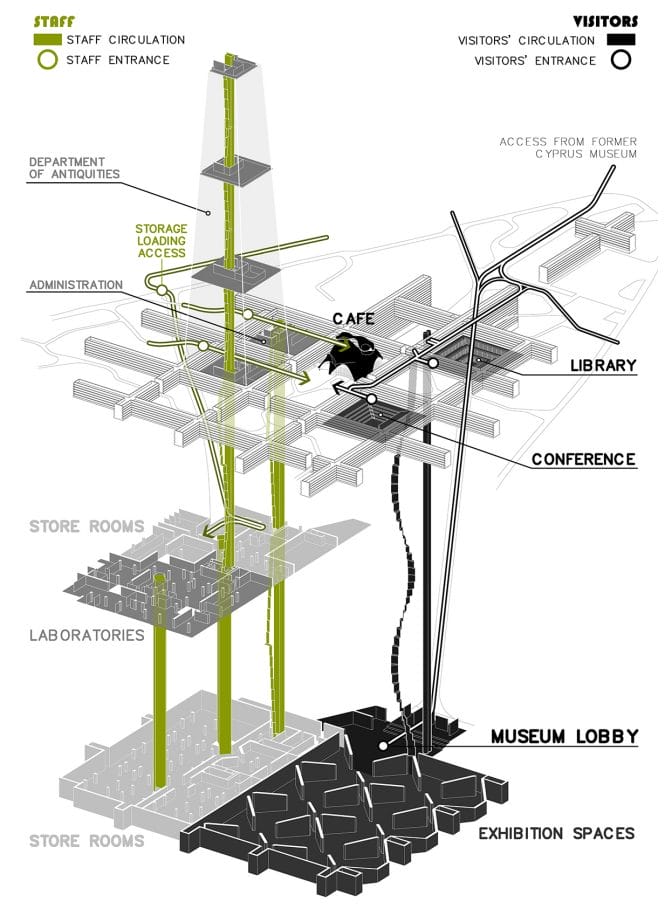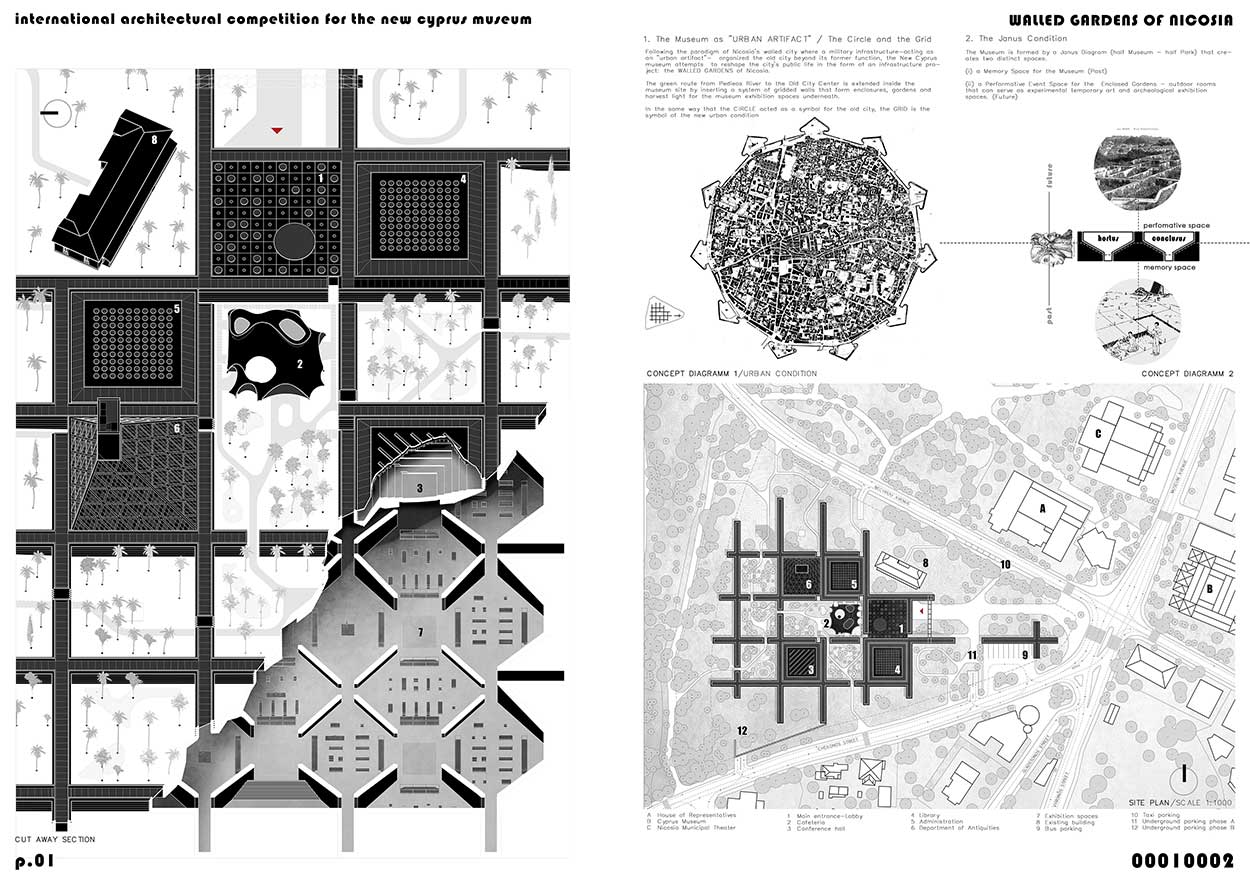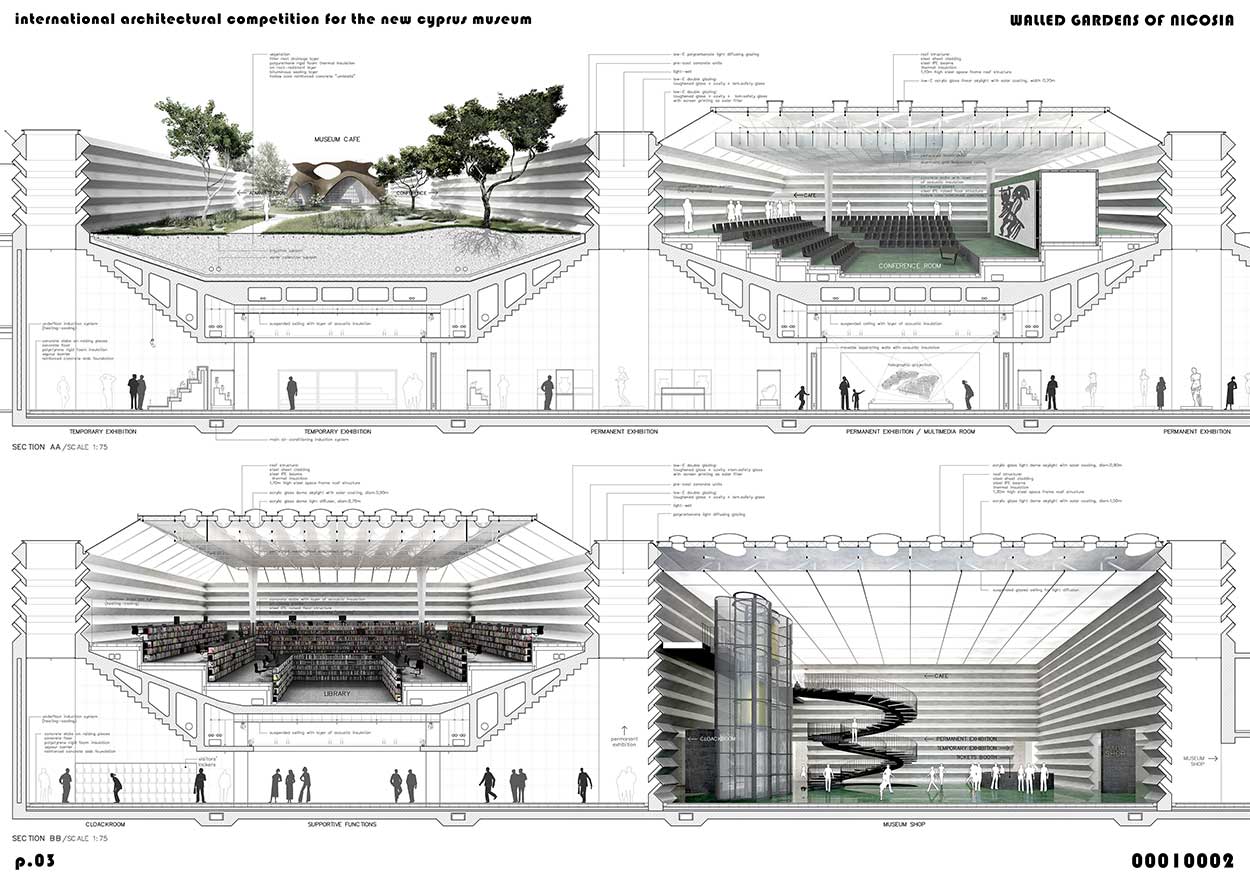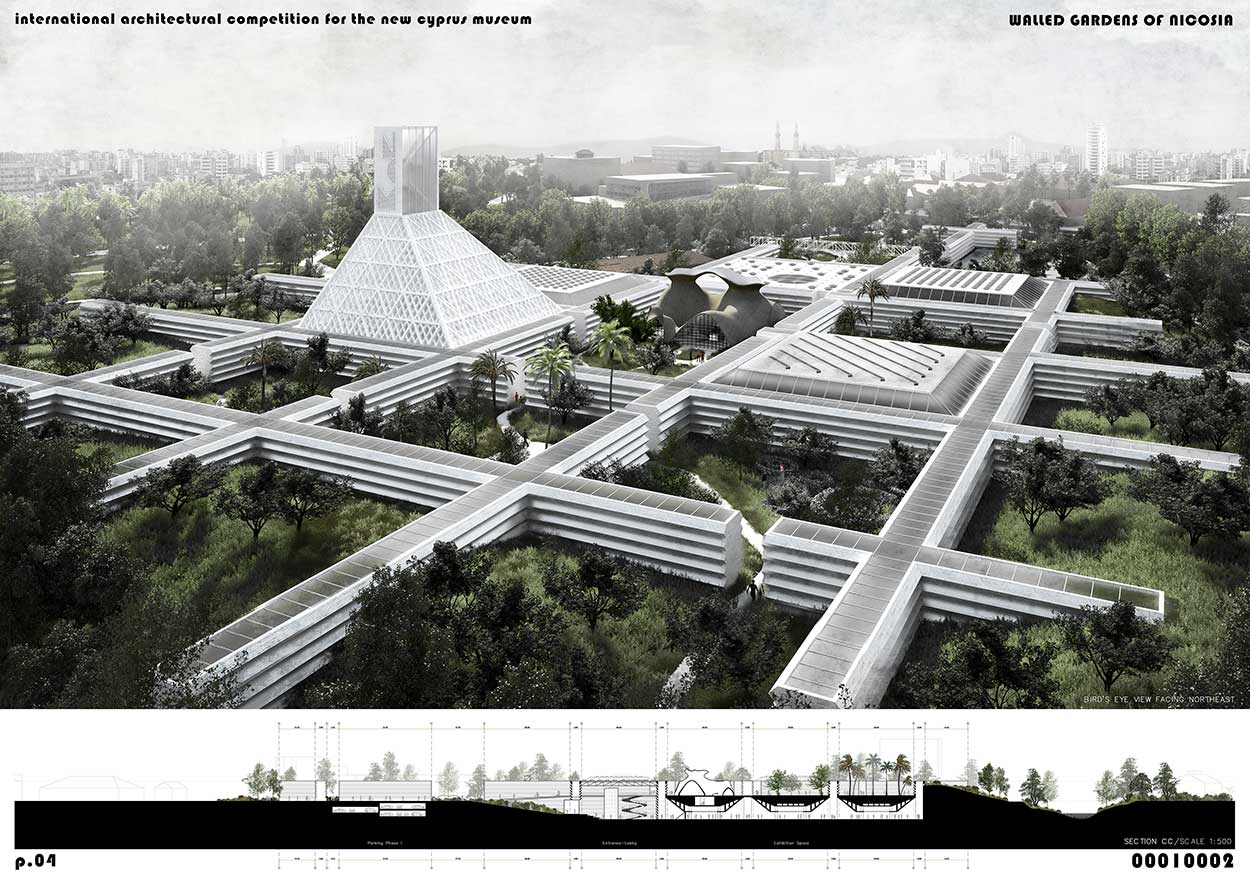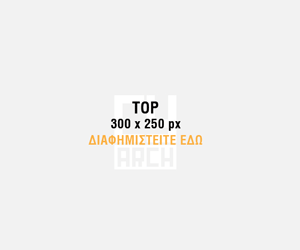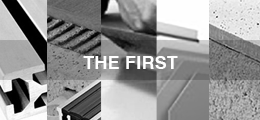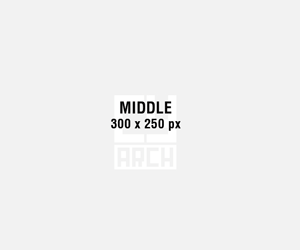The New Cyprus Museum Competition Entry- “Walled Gardens of Nicosia”
The New Cyprus Museum / “Walled Gardens of Nicosia”
Leonidas Papalampropoulos, Georgia Syriopoulou
Project Team: Alexis Tsakalakis Karkas
The evolution of the museum typology is manifested in a process through which the traditional archival and scientific character of the museum is slightly mutated into a hybrid programmatic complex that attempts to reshape the public realm.
The Museum as “URBAN ARTIFACT” / the CIRCLE & the GRID
Following the paradigm of Nicosia’s walled city where a military infrastructure-acting as an “urban artifact” – organized the old city beyond its former function, the New Cyprus museum attempts to reshape the city’s public life in the form of an infrastructural project.
The new structure meteorises between the necessity of an enclosed specific program (the museum) and the openness and ambiguity of a green recreational social space (the garden) that connects the public route from Pedieos River to the Old City Center. In order to synthesize these two contradictory types of space, the design appropriates the paradigm of the WALLED GARDENS as the means to articulate a coherent new urban typology. The city’s green route is extended inside the museum site by inserting a grid system – a method similar to the archeological excavation process – in the form of intersecting walls, that shapes enclosures, gardens and harvests light for the museum exhibition spaces underneath. In the same way that the circle stood as a symbol of the old city, the GRID is the symbol of the new urban condition.
The “JANUS” Condition
The Museum is formed by a Janus Diagram (half Museum – half Garden) that creates two distinct but equally important sectors shaped by the grid:
(i) a lower Memory Space for the Museum Exhibition (PAST).
(ii) an upper Performative Space for the Enclosed Gardens – outdoor rooms that can serve as experimental temporary art and archeological exhibition spaces. (FUTURE)
The Gardens
The upper part of the complex is dedicated to an experimental non-functional, non-specific outdoor public space that forms the core of the proposal; a space that is looking towards the future through a process of try and error.
The walls serve as light-wells that illuminate the underground exhibition spaces and at the same time form ROOMS that can be occupied differently by the community to host public events, contemporary exhibitions, leisure activities or serve as “not yet established archeological exhibition protocols” referred here as “non sites”. Additionally, the outdoor spaces are supplemented with permanent functions such as the Cafe, the Conference Hall, The Library, the Department of Antiquities and the Administration.
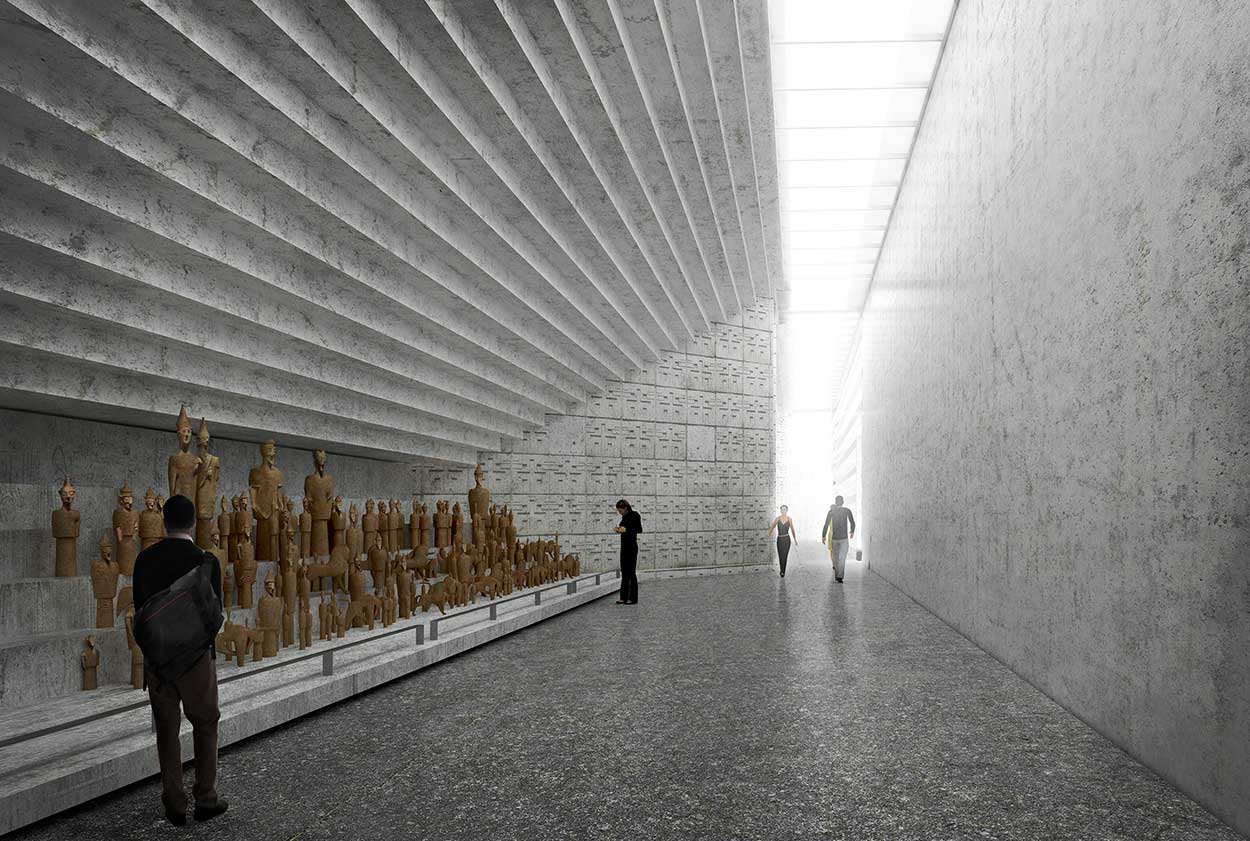
Swedish Mission Exhibition, @Leonidas Papalampropoulos, Georgia Syriopoulou
The Museum
The lower part forms an underground yet naturally illuminated exhibition space as light becomes the connecting element between the two sectors.The enclosures form distinct thematic exhibition rooms; an inverted space oriented towards the past, resembling the process of memory. The archeological grid provides the canvas to perform a time based wandering in the architectural structure. The spaces with low natural light accessibility are exploited for low light requirement exhibitions (special displays, multimedia, interactive etc). The laboratories and the storage are located adjacent to the exhibition space with natural light provided by the light-wells and 3 atriums. At the east side, a large ramp (5%slope) connects the museum lobby to the existing museum and the old city sector.
Structure & Phasing
The structural system is divided into three parts:
(i) The concrete bearing walls and the inverted umbrella shaped slabs of the lower part
(ii) The lightwells
(iii) The lightweight steel truss structures that covers the upper enclosed functions: the library, the conference, the lobby and the administration.
Second phase construction will be materialized by steel columns and trusses as infills to the remaining un-occupied slots of the grid as shown in the following diagram.
Sustainability
Responding to the Promoter’s concern for sustainable design solutions the project seeked for ways to treat the climatization, ventilation and energy issues that the size and the diversity of the program pose through water collection, seasonal energy storage and heat re-covery and re-use strategies.
Nicosia’s inland location means that the city is not influenced by the Mediterranean Sea at the same degree as the coastal cities. For this reason, summers in Nicosia are hotter and winters are colder than on the coast, and differences between day maximum and night minimum temperatures are larger.
Therefore, the design took an early orientation towards developing an expansive public park on top of the museum that would enhance its bioclimatic function, since the park’s earth mass offers multiple benefits:
– It provides with an insulating thermal mass that shields the building against heat gains and loses, solar radiation and temperature fluctuations that put a heavy load on air-conditioning systems.
– it integrates a water collection and storage system that covers the watering needs of the park’s plantation and can be re-cycled for grey water use throughout the building.
– It creates a pleasant public space that can accommodate the formal and informal daily social life of the citizens uniting all the cultural functions of the district.
The double layered design of the lightwells with adjustable openings offers an adaptable interface with the exterior environment: it can function as a buffer zone against the winter cold or as a breathing skin for natural heat and exhaust air extraction in summer. Heat recovered from the exhaust air in winter via heat exchangers can be used to pre-heat the air used by the air-conditioning units, thus lowering the energy loads. Additionaly, the fresh air input for the air-conditioning system can be naturally pre-heated or pre-cooled in underground channels lowering the cost of air temperature moderation.
Panels


